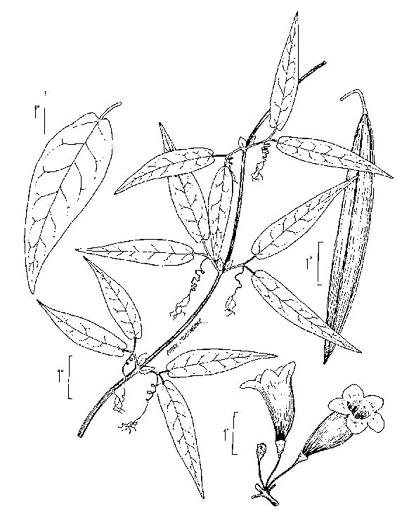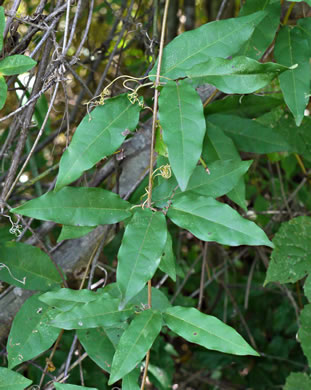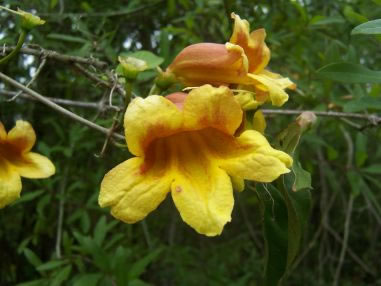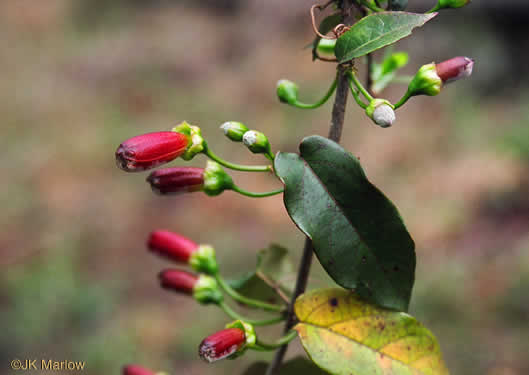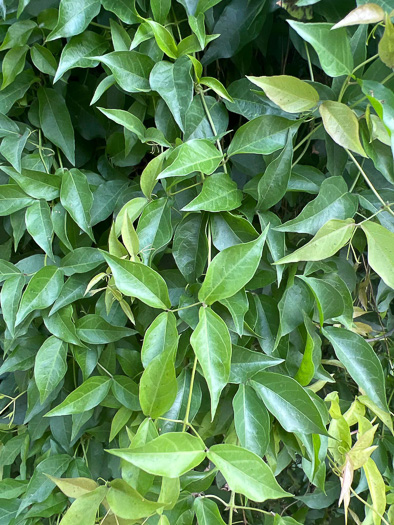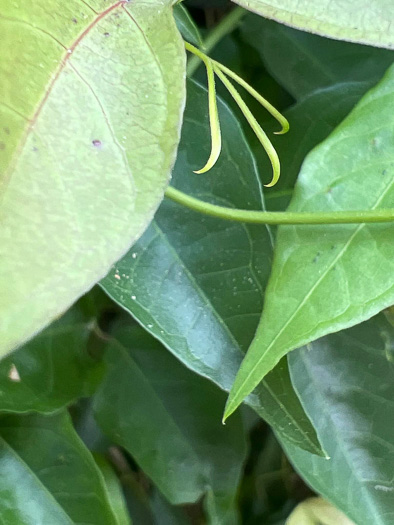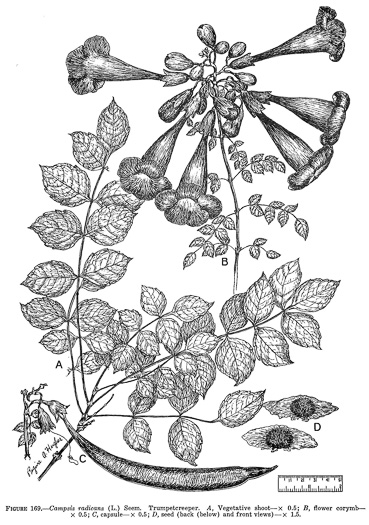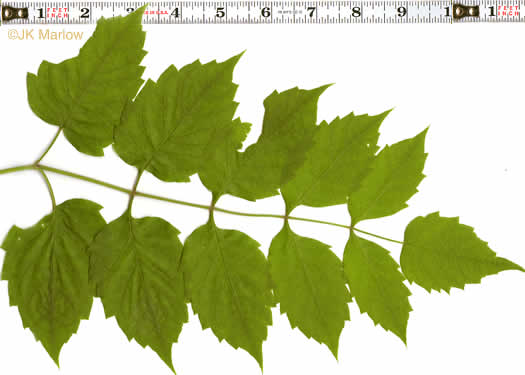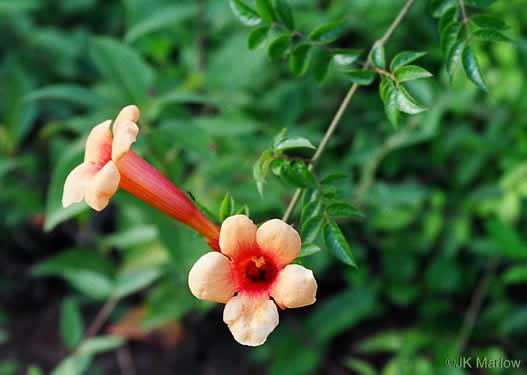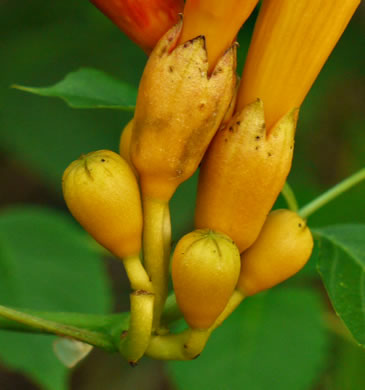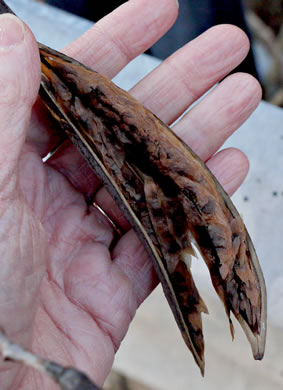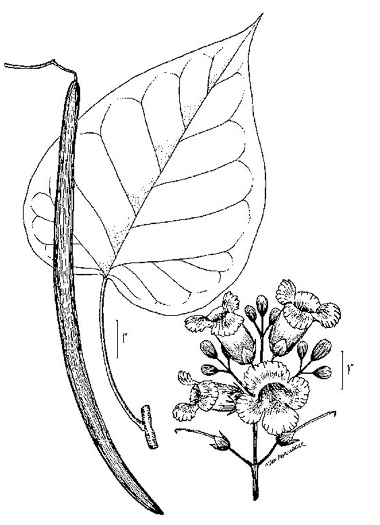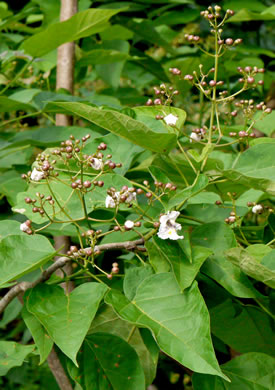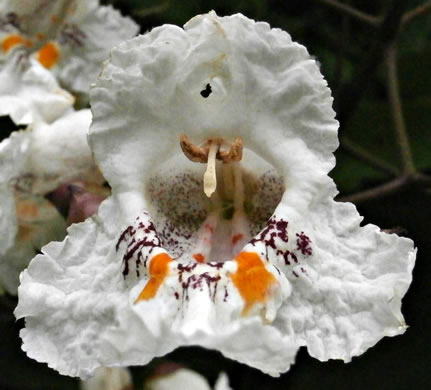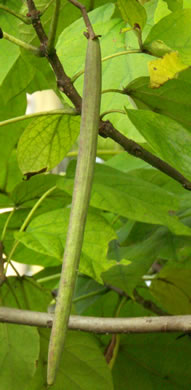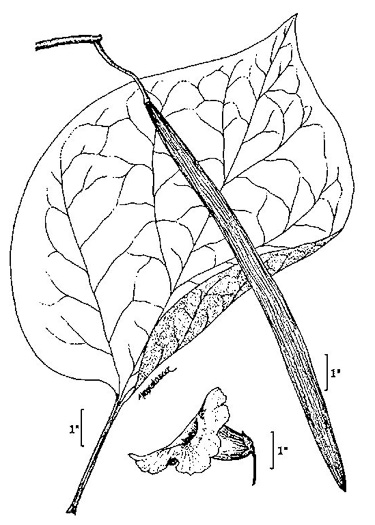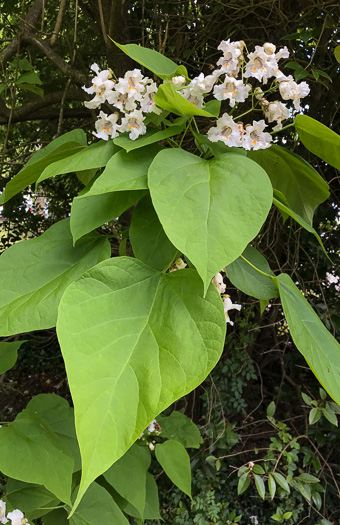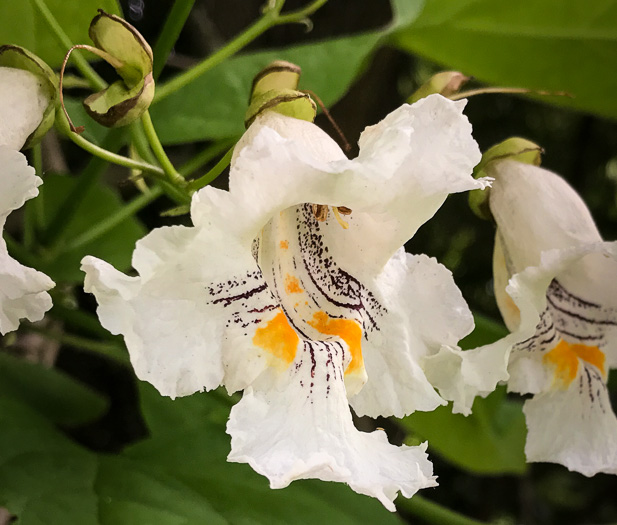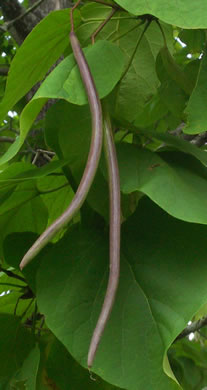Hovering over an image will enlarge it and point out features (works better on desktop than on mobile).
![]() A camera indicates there are pictures.
A camera indicates there are pictures.
![]() A speaker indicates that a botanical name is pronounced.
A speaker indicates that a botanical name is pronounced.
![]() A plus sign after a Latin name indicates that the species is further divided into varieties or subspecies.
A plus sign after a Latin name indicates that the species is further divided into varieties or subspecies.
Most habitat and range descriptions were obtained from Weakley's Flora.
Your search found 7 taxa in the family Bignoniaceae, Trumpet Creeper family, as understood by Vascular Flora of the Carolinas.

![]()
![]() Common Name:
Crossvine
Common Name:
Crossvine
Weakley's Flora: (4/24/22) Bignonia capreolata FAMILY: Bignoniaceae
SYNONYMOUS WITH PLANTS National Database: Bignonia capreolata FAMILY: Bignoniaceae
SYNONYMOUS WITH Vascular Flora of the Carolinas (Radford, Ahles, & Bell, 1968): Anisostichus capreolata 167-01-001 FAMILY: Bignoniaceae
Habitat: Swamp forests, bottomlands, forests, woodlands. Though primarily a species of swamp and bottomland forests, Bignonia capreolata often occurs as well in mesic or even dry forests, where it generally remains stunted (most individuals with only a few leaves) and does not flower or fruit
Common (uncommon in Mountains of GA & SC) (rare in Mountains of NC)
Native to the Carolinas & Georgia

![]() Common Name:
Claw-vine, Cat's-claw-vine
Common Name:
Claw-vine, Cat's-claw-vine
Weakley's Flora: (4/14/23) Dolichandra unguis-cati FAMILY: Bignoniaceae
SYNONYMOUS WITH PLANTS National Database: Macfadyena unguis-cati FAMILY: Bignoniaceae
Habitat: Disturbed areas, fruit groves, hammock edges, cultivated and naturalized
Rare
Non-native: tropical America

![]()
![]() Common Name:
Trumpetcreeper, Trumpet Vine, Cow-Itch Vine
Common Name:
Trumpetcreeper, Trumpet Vine, Cow-Itch Vine
Weakley's Flora: (4/24/22) Campsis radicans FAMILY: Bignoniaceae
SYNONYMOUS WITH PLANTS National Database: Campsis radicans FAMILY: Bignoniaceae
SYNONYMOUS WITH Vascular Flora of the Carolinas (Radford, Ahles, & Bell, 1968): Campsis radicans 167-02-001 FAMILY: Bignoniaceae
Habitat: Bottomland forests, swamp forests, fencerows, old fields, forests, thickets, disturbed areas
Common
Native to the Carolinas & Georgia

![]()
![]() Common Name:
Southern Catalpa, Fishbait Tree, Cigar Tree
Common Name:
Southern Catalpa, Fishbait Tree, Cigar Tree
Weakley's Flora: (4/24/22) Catalpa bignonioides FAMILY: Bignoniaceae
SYNONYMOUS WITH PLANTS National Database: Catalpa bignonioides FAMILY: Bignoniaceae
SYNONYMOUS WITH Vascular Flora of the Carolinas (Radford, Ahles, & Bell, 1968): Catalpa bignonioides 167-03-001 FAMILY: Bignoniaceae
Habitat: Bottomlands and streambanks (as a native), escaped or persistent after cultivation
Uncommon
Native to Coastal Plain of SC & GA, early naturalized in a more widespread area

![]()
![]() Common Name:
Northern Catalpa, Indian Cigar Tree, Catawba Tree
Common Name:
Northern Catalpa, Indian Cigar Tree, Catawba Tree
Weakley's Flora: (4/24/22) Catalpa speciosa FAMILY: Bignoniaceae
SYNONYMOUS WITH PLANTS National Database: Catalpa speciosa FAMILY: Bignoniaceae
SYNONYMOUS WITH Vascular Flora of the Carolinas (Radford, Ahles, & Bell, 1968): Catalpa speciosa 167-03-002 FAMILY: Bignoniaceae
Habitat: Bottomland forests, stream banks, and mesic upland forests (as a native), also old fields, roadsides, moist disturbed areas, suburban woodlands, eastwards of its native range escaped or persistent after cultivation, and sometimes thoroughly naturalized
Uncommon in Carolina Mountains & NC Piedmont (rare elsewhere in GA-NC-SC)
Native: west of Carolinas & Georgia, early naturalized in a more widespread area

![]() Common Name:
Farges Catalpa
Common Name:
Farges Catalpa
PLANTS National Database: Catalpa fargesii FAMILY: Bignoniaceae
Non-native

Common Name: Chinese Catalpa
Weakley's Flora: (4/24/22) Catalpa ovata FAMILY: Bignoniaceae
SYNONYMOUS WITH PLANTS National Database: Catalpa ovata FAMILY: Bignoniaceae
Habitat: Suburban woodlands
Non-native: China
Your search found 7 taxa. You are on page PAGE 1 out of 1 pages.

